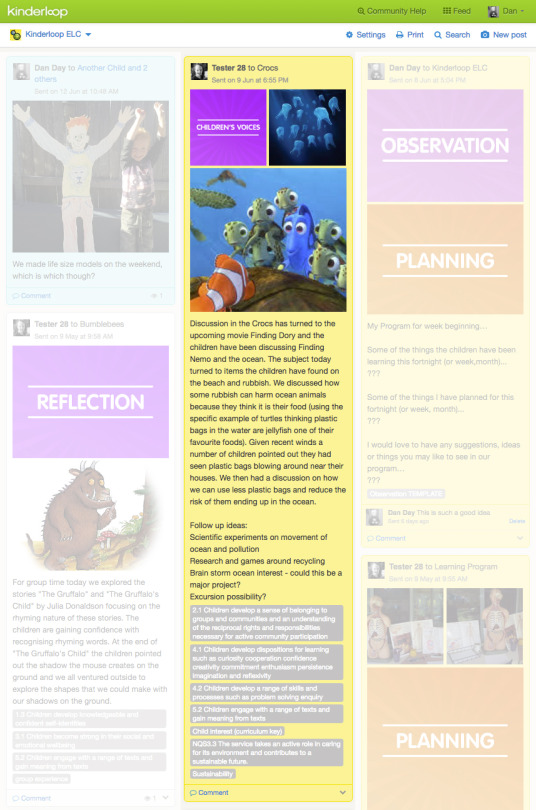Since its introduction, the National Quality Standards have raised the bar for facilities providing care and education for children. The task of documenting your centre’s progress and engagement with the quality areas can be a daunting task for leaders and educators alike. Recording evidence, milestones, ideas and progress is easy with Kinderloop!
Providing evidence of regular health and safety checks of the learning environment can require a lot of paperwork. Kinderloop can be used to reduce the volume of paper used to document vital safety checks by laminating a master copy of checklists and taking a photo of them at the end of the week to post onto your centre’s private Kinderloop. This reduces the storage required for these records and a quick tag means that they will easily be found for assessment and compliance visits.
Promoting each child’s routine, sleep and eating habits may be easily and quickly shared with families using digital documentation. This fosters and supports strong and meaningful relationships with families and shares each aspect of the child’s day with their families. Information about healthy lifestyles and eating habits may also be shared using Kinderloop and can help to further foster a sense of community. Why not post a healthy recipe that the children have been enjoying at the centre and invite families to share their favourite recipe?
Environmental intelligence starts in the early years of learning. A sustainability plan could be easily shared with families and educators using digital documentation, allowing for real time feedback and is a great step for reducing the environmental impact of sharing information with families. All areas of the educational program that relate to sustainable practice can also be tagged to allow for easy searching and tracking of projects and wish lists.
Giving the children a voice in their learning environment is a key step to empowering children to take a role in their educational journey. Providing children with opportunities to share their ideas and to create meaningful ways of tracking their exploration through project work can deepen the understanding and engagement in such products. Within Kinderloop, this may be achieved by creating groups or tags for specific projects. These can then be searched and viewed as meaningful documentation for the learning journeys children take when following their interests.

Mind maps can be a great tool for documenting the process of exploring children’s ideas and possibilities for future planning (read more here). Apps like “SimpleMind” allow for expanding ideas through various branches and promote child and educator engagement, encouraging children to think outside of the norm. Using these in conjunction with Kinderloop allows for an expanding of possibilities on ways of recording children’s ideas, and opens up possibilities for expressing ideas.
Creating specific groups can also help educators map their ideas for the learning environment and record the observed engagement of children in the areas already available to them in the learning environment. These groups can also be used with the assistance of tags to ensure that interests and areas of focus may be included in future planning for intentional teaching.
Children’s health and safety and the physical environment are two very important quality areas within the National Quality Standards. Using Kinderloop enables educators to quickly and easily record vital information that will help map progress towards goals and record the voice and ideas of children within the learning environment, taking some of the stress out of providing children with high quality care and education.